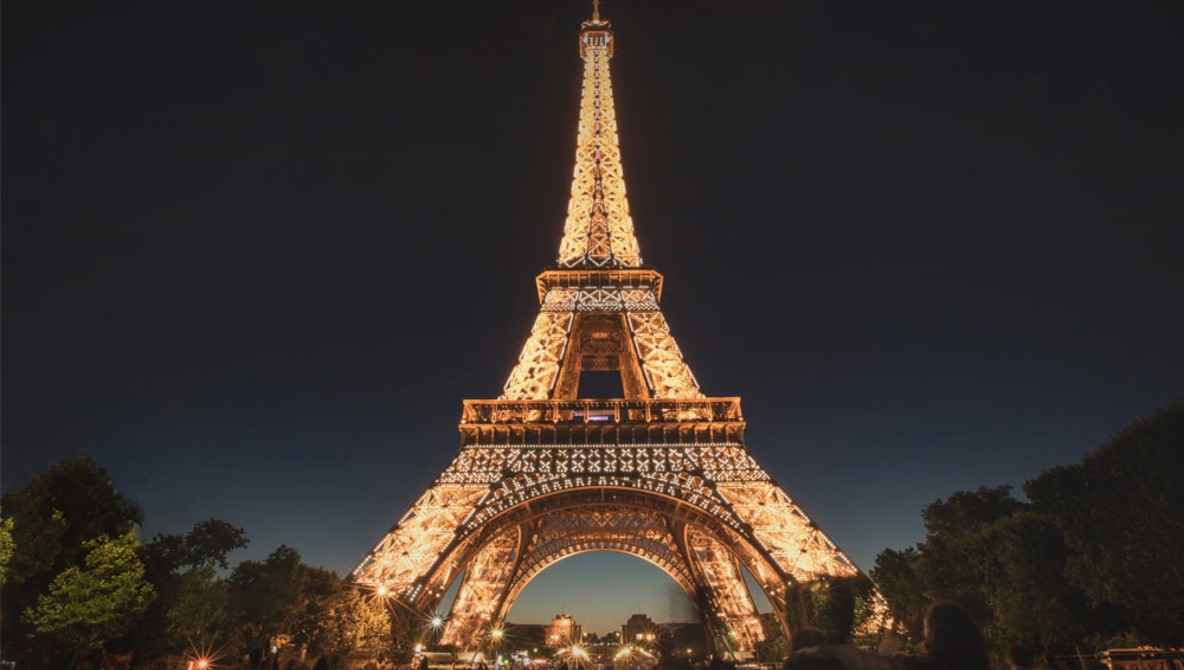It’s one of the most photographed and recognizable monuments in modern history. But did you know it’s actually illegal to take pictures of the Eiffel Tower at night?
By way of copyright law in the European Union (EU), any artistic work, be it a photo, painting, song, or even building, is protected “for the lifetime of its creator, plus 70 years.”
Common sense does generally prevail, in that many countries operate a “freedom of panorama” law, whereby cityscape photography is permitted on the basis that the “artwork” — or building — is not the main focus of the piece. However, France is one of a number of countries that chose to opt out of the freedom of panorama via a loophole in EU law.
The creator of the Eiffel Tower died back in 1923, meaning the restrictions on photographing it expired in 1993. However, the lights installed on the Tower in 1985 are considered an independent work of art, and thus, the right to legally take photos of the structure at night is still many decades away.
Having said that, there are very few cases in which the copyright holder takes action against someone using a photo of the landmark; the majority of claims are against large corporations.
Lead image credit: Stephen Leonardi on Unsplash.







Good point. It`s not about the time, but the lights. I just assumed it is illuminated every night. I will edit my post.
It's not illegal taking picture is illegal the commercial use of photos of the monuments as for Colosseum in Italy or others across the continent
Hi,
the title of this article is wrong.
"Did You Know it’s Illegal to Photograph the Eiffel Tower at Night?" --> false !
What is saying the law ? You are not permitted to SELL pictures of Eiffel Tower taken at night without asking permission to the creator of the lighting, who owns the artistic rights, but you are absolutely allowed to take photographs of Eiffel Tower at night. There is a difference between the acting of photographing, the artistic part, and the business. So the right title is "Did You Know it’s Illegal to sell photographs of the Eiffel Tower taken at Night?"
Don't worry, police will not come to you if you are photographing Eiffel Tower at night, because you are allowed to do. The lighting is copyrighted by its artist, like some monuments ... paintings ... etc
Regards
Yes
"By way of copyright law in the European Union (EU), any artistic work, be it a photo, painting, song, or even building, is protected “for the lifetime of its creator, plus 70 years.”
Wrong! This is not EU law, this is French law. In most European countries there is the freedom of panorama.
In France in fact every single building is copyrighted. So in case of the Eiffel tower rather the reverse is true: They explicitly allow you to take and publish pictures of daylight pictures.
From https://www.toureiffel.paris/en/business/use-image-of-eiffel-tower
DAYLIGHT VIEWS OF THE TOWER
Free user
The image of the Eiffel Tower by day falls within the public domain: its use is rights-free, and may therefore be reproduced without prior authorisation by the SETE, the managing company of the image of the Eiffel Tower on behalf of the Mairie de Paris.
THE TOWER ILLUMINATED
Controlled use
The various illuminations of the Eiffel Tower (golden illumination, twinkling, beacon and events lighting) are protected.
The use of the image of the Eiffel Tower at night is therefore subject to prior authorisation by the SETE. This use is subject to payment of rights, the amount of which is determined by the intended use, the media plan, etc.
Views of the Eiffel Tower taken by private individuals for private use do not require prior agreement. However, professionals must contact our teams, who will inform them of the conditions of use governing images.